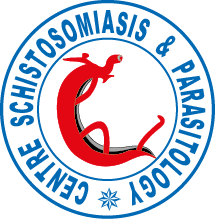Compatibility of Schistosoma mansoni and Biomphalaria pfeifferi in Northern Senegal
Abstract
The construction of the Diama dam on the Senegal River and the ensuing ecological changes have led to a massive outbreak of Schistosoma mansoni infection in Northern Senegal, associated with very high intensity of infections, due to extremely intense transmission. The vectorial capacity of Biomphalaria pfeifferi from Ndombo, near Richard-Toll was investigated in order to assess the role of the snail–parasite relationship in this particular epidemiological situation. The results revealed an unusually high compatibility between the Senegalese S. mansoni strain and its local snail intermediate host, B. pfeifferi. The snail infection rate after exposure to a single miracidium per snail was 87%. The cercarial production of infected snails was very high, with a mean total production of 50456 cercariae per snail. No significant difference was found in the total cercarial output between snails exposed to 1 miracidium and those exposed to 5 miracidia. The increase in the rate of cercarial output was significantly greater in snails exposed to 5 miracidia, but there was a higher mortality in this group. The chronobiological cercarial production pattern showed a peak around mid-day. The implications of these findings on the epidemiology of schistosomiasis in Northern Senegal are discussed.
